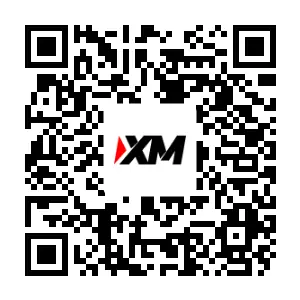How to Read Pattern Setups for Beginner Traders
Below, we detail the common chart formations that novice traders ought to be acquainted with: these patterns are categorized into those indicating reversals and those suggesting continuations.
Reversal Setups
The widely used reversal chart patterns are:
Double Top
Double tops chart pattern is a "M" shape with 2 tops that appears on the price chart when the market is moving upward.
The double tops setup is a bearish formation that materializes when the price hits and reaches a resistance level.
The price goes up, then dips a bit, turns up again, and goes up to where it was before, or a bit lower. Then, it goes down again, making what is known as a double tops chart setup.
Double Bottom
The double bottom formation manifests as a "W" shaped pattern featuring two distinct lows or troughs occurring during a descending price trend.
The double bottom formation signifies a positive pattern that materializes after the price reaches and reacts to a support floor.
The price movement will descend, recover slightly, then reverse downward again, continuing its descent until it reaches the prior low, or marginally above it, before beginning an upward movement once more, thus forming what is known as a double bottom pattern.
Head Shoulder Chart Setup
The Head and Shoulders setup constitutes a bearish reversal chart formation that appears following an upward trend.
The pattern begins with an initial peak, known as the first shoulder, followed by a slight dip in price. Then comes a higher peak, representing the head, another price dip, and finally, a third peak referred to as the second shoulder.
The line connecting the lowest points between two gold price lows forms the neckline of the head and shoulders pattern. Once price drops below this neckline, you get your reversal signal.
Reverse Head Shoulder Chart Setup
The Reverse Head and Shoulders chart pattern signals bullish reversal trends, often following extended downward movements.
First, there's a drop, which is the first shoulder pointing the other way, then a small rise in price, then a second drop that's lower, which is the head pointing the other way, then another price rise, then a last drop in price, which is the second shoulder pointing the other way.
The highest points between two gold price peaks form what is known as the neckline. The reversal signal from a reverse head and shoulders chart pattern is validated when the price moves above this neckline.
Continuation Patterns
Continuation patterns are:
Rising Wedge or Ascending Wedge
A rising wedge forms in an uptrend. It acts as a continuation pattern. It looks like a triangle slanting upward.
A rising wedge pattern features sloped support and resistance lines that rise. Prices climb within it. After breaking out, the uptrend often persists.
Falling Wedge or Descending Triangle
Falling wedge is a continuation setup that forms during a downwards trend and this patterns looks like a triangle consolidation pattern that has a descending slope that's heading downward.
The falling wedge chart formation is characterized by support and resistance lines sloping downwards, suggesting continued price decline, and once the price breaks out of this descending wedge structure, the established downward trend is expected to persist.
Bullish Pennant or Bearish Flag
Bullish Flag is a setup with parallel support & resistance levels that forms during a upward trend & a continuation signal gets derived & generated when the price goes above bullish flag pattern & the upward trend continuation signal is derived & generated by continuation bullish flag pattern.
Bearish Pennant or Bearish Flag
A Bearish Flag pattern is characterized by parallel support and resistance levels that emerge during a downward trend, with a continuation signal generated when the price falls below the bearish flag structure, indicating a continuation of the downtrend as indicated by the bearish flag setup.
How to Read Pattern Setups for Beginner Traders
Get More Lessons:
- Study How to Trade AEX25 Stock Indices
- Nasdaq Index Strategy Tutorial
- How to Build XAU/USD Indicator Trading System
- Gann HiLo Activator Automated System
- How Do You Analyze/Interpret Forex in MetaTrader 5 Platform?
- How to Trade Fibo Retracement Indicator in MetaTrader 4 Software Platform
- What Time Does S&P500 Index Open?
- Interpreting Forex Line Charts: How to Analyze
- How to Open a Demo MetaTrader 4 XAUUSD Account in the MetaTrader 4
- Divergence Setups Summary XAUUSD GOLD TRADING

